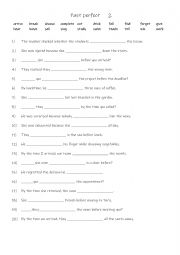
|
Past perfect 2
First, students need to familiarise themselves with the 20 verbs. Then they read the sentences to see which verb is needed to complete the sentence. Each verb is used 1 time! Answers on page 2
Level: elementary
Age: 10-100
Type:
Downloads: 111
|
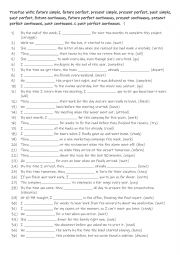
|
B1+-C1 12 Tenses 1
Students should practise these tenses because they are essential for expressing actions and events in different time frames, allowing for clear and precise communication. By mastering these tenses, students can talk about future plans (future simple), describe ongoing actions (present continuous, future continuous), and show the connection between ...
Level: intermediate
Age: 10-100
Type:
Downloads: 114
|
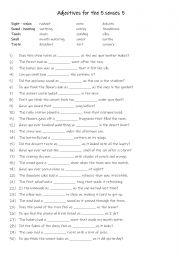
|
A2+-B1 Adjectives for the 5 senses 5
Students should learn sensory adjectives to expand their descriptive vocabulary and enhance their communication skills. These words enable vivid and engaging descriptions, bringing writing and speech to life with clarity and detail. Adjectives like "picturesque," "deafening," or "tangy" help students express nuanced observations, while emotive term...
Level: elementary
Age: 9-100
Type: worksheet
Downloads: 133
|
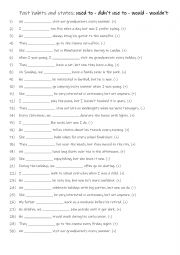
|
B1-B2 Past habits and states - used to - didn�t use to - would - wouldn�t practise
Students complete the sentences with the correct form of the verb using (+) for positive and (-) for negative verb constructions. Obviously, would cannot be used with state verbs, but can and should be used to contrast the past instead of just using used to. A selection of possible answers on page 2.
Level: intermediate
Age: 9-100
Type: worksheet
Downloads: 118
|
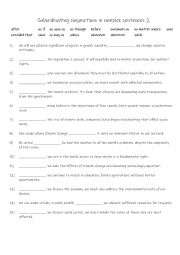
|
B1+-B2 Subordinating conjunctions in complex sentences Part 2
Using subordinating conjunctions allows students to express more detailed and nuanced thoughts. For instance, "although" and "even if" help convey contrast or condition in sophisticated ways. They add variety to writing and speaking, moving beyond simple sentences and making communication more engaging and dynamic. For example, "whenever" or "whoev...
Level: intermediate
Age: 10-100
Type:
Downloads: 129
|
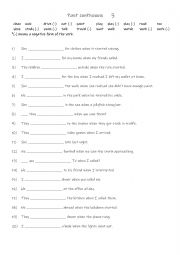
|
Past continuous 3
Learning the past continuous tense is important because it helps students describe actions that were in progress at a specific time in the past. It adds context and detail to storytelling, allowing for clearer descriptions of ongoing past events or interrupted actions. Mastering the past continuous improves fluency and accuracy in both speaking and...
Level: elementary
Age: 7-100
Type:
Downloads: 115
|
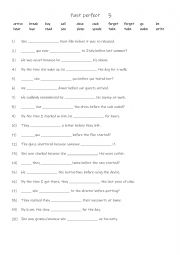
|
Past perfect 3
First, students need to familiarise themselves with the 20 verbs. Then they read the sentences to see which verb is needed to complete the sentence. Each verb is used 1 time! Answers on page
Level: elementary
Age: 10-100
Type:
Downloads: 121
|
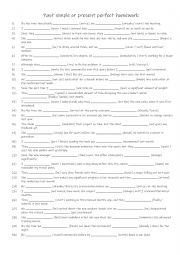
|
B1-B2 Past simple v present perfect
Understanding these tenses improves students� ability to interpret and respond to conversations and texts that involve past and present actions. It aids in following narratives and discussions more effectively.Mastery of these tenses allows learners to speak and write with greater accuracy and fluency. They can more precisely communicate differen...
Level: intermediate
Age: 10-100
Type:
Downloads: 117
|
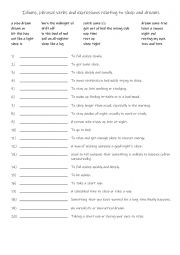
|
B2-C1 Idioms, phrasal verbs and expressions relating to sleep and dreams
First, students need to familiarise themselves with the 20 idioms and expressions and their meanings. Then they read the definitions to see which one is being described and write that word in the space provided Answers on page 2.
Level: intermediate
Age: 12-100
Type:
Downloads: 105
|
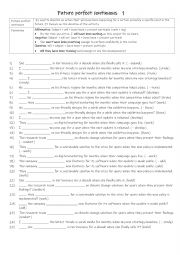
|
B1+-B2 Future perfect continuous 6
Students should learn the future perfect continuous because it enables them to express actions that will have been ongoing for a specific duration before a certain point in the future. This tense is particularly useful for discussing long-term plans or commitments (e.g., By next year, she will have been working here for a decade) and for highlighti...
Level: intermediate
Age: 11-100
Type:
Downloads: 126
|












